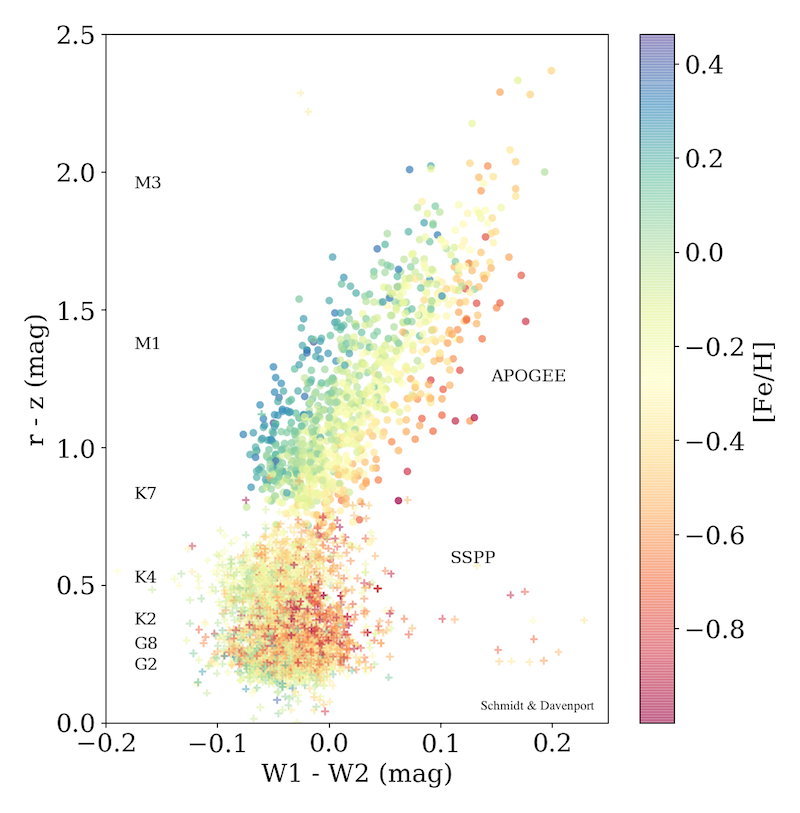Photometric Metallicities
03 Apr 2017Here is a cool figure that I made with S. J. Schmidt a few years ago at a research retreat in beautiful Friday Harbor, based on work she was doing with APOGEE + WISE data for low-mass stars (see very relevant paper here)

We added to her APOGEE work by including dwarf stars processed by the SDSS Stellar Parameter Pipeline (SSPP).
What comes out of this figure is a potentially useful result: you can measure the metallicity of a star (roughly) using it’s WISE (W1-W2) color!
For M dwarfs, the [Fe/H] values can be determined by subtracting the measured (W1-W2) color from the stellar locus value for a given (r-z) color. This is a fairly small amplitude signal, however, with the offset in (W1-W2) having a max of +/-0.1 mag. The effect is less pronounced for earlier type stars (GK) measured by SDSS, but is still in the same direction about the locus.
Next Steps
- What is the cause of this signal?
- molecular features that show up for cool stars and are metallicity dependent I guess
- If we update the sample w/ latest public data from SDSS (BOSS) and APOGEE, is the signal still there?
- Can we find more cool dwarfs in APOGEE? (>M4)
- (W1-W2) appears to broaden through M dwarfs. Does it continue?
- Is the signal at all measurable for earlier type (GK) stars?
- Fit a 3D polynomial to parameterize
- Redo as function of (J-W1) instead of (r-z)
- then doesn’t depend on SDSS photometry, can be done for all WISE stars!
- [Fe/H] map of nearby Milky Way?
- use Gaia to pick only dwarfs
What I need: People who know more about the current state of the field for “chemical cartography” of our Milky Way. Is it still exciting to measure [Fe/H] gradients? Look for kinematic+chemical substructure?